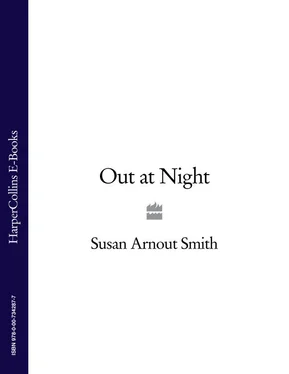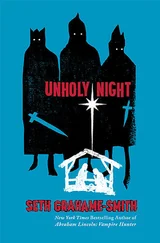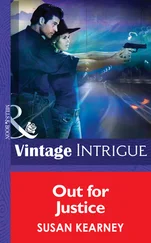But there was nothing normal about this room.
Small school head shots covered the walls. A dizzying blur of faces smiled back, eyes friendly, direct, frozen in time, photos placed so thickly together Grace wasn’t sure what color the walls had once been.
Under each photo Bartholomew had carefully block-printed out the name of the student. His handwriting was neat, precise. The hairstyles in some of the photos went back thirty years—lacquered helmets and mullets and bubble cuts, and the tape holding the photos and names to the walls was yellowed and cracked.
At some point, Bartholomew had run out of room and had started using the floor and ceiling. It looked like a fungus encroaching, a swirling mass of color and imagery so intense and dislocating Grace had to stop herself from walking out.
It was stuffy in the room but Grace felt cold. She walked around a desk he’d constructed out of a wooden door propped up on cinder blocks, stacked with foot-high columns of books and papers. A brown plastic kitchen container held pens and pencils instead of knives and forks. Buried in the middle of the papers was a Remington typewriter with a piece of paper wound into its platen.
Grace twisted the cartridge. The paper in the typewriter was blank. She looked around the room, trying to absorb it. Trying to slow her heart. Trying not to run.
“What do you think?”
“Reminds me of John Nash.”
Zsloski was silent.
“That schizophrenic mathematician at Princeton who created game theory and later went on to win a Nobel prize. He had a room like this. Only not photos. Equations and—
“Oh my God.” She rocked back on her heels as if she’d been hit in the face. Her stomach clenched and for the first time, she felt a jolt of fear.
Zsloski followed her gaze.
Grace went over to the corner, where two walls connected.
Amid the swirling cacophony of images, taped onto the crowded wall was a blurry snapshot of Grace, her name block-printed under it. Next to the photo, also taped to the wall, was an article from the Desert Sun about the lecture and Bartholomew’s arrest.
Zsloski nodded. That was what he’d brought her here to look at, she knew that now.
“He took that picture that day he crashed my lecture. A month ago.”
“Any idea why?”
She shook her head.
He nodded as if he expected that. “They’ll be asking you about that.
And the lecture. You’ve got the address, right?”
She nodded, her eyes still on the photo. She’d seen evil before, more times than she cared to remember. But never such a clear manifestation of insanity. It was a darkness at the end of the road. A troubling message from the grave, every bit as potent as Bartholomew’s Morse code summoning her.
She wondered if somewhere in the room, hidden in plain sight, Bartholomew had taped the face of his killer to the wall.
If even now it was staring at her, smiling.
The FBI substation was tucked in a group of brown office buildings trimmed in succulents. Perry Como was singing through speakers as she crossed the covered parking lot. There was no identifying sign on the building, nothing in the lobby.
Upstairs, the door was made of steel. To the right was a keypad, to the left, a buzzer. She scanned the ceiling and found it, what looked like a gray convex ceiling light.
Behind the locked steel door were video screens, and on one of those screens she stood in the hallway, leather satchel in hand, a woman of uncommon beauty.
She’d added that last part to make herself smile. Always good to be smiling when caught on a camera in front of an FBI door. It didn’t work. The room in Bartholomew’s house had knocked the smile out of her.
She pressed the button and was buzzed into a small anteroom where an agent stood behind Plexiglas. He was wearing a sports shirt and slacks with no ID tag. He didn’t introduce himself.
There was a metal slot in the glass, like a tollbooth, and she slid her ID in so he could check it. He looked up briefly, making sure the picture matched. She resisted the urge to tell him she was much better-looking at night after he’d had a few drinks.
He slid her ID back and buzzed her through an adjoining door that opened into a small conference room. A beeper went off: the all-clear signal that she wasn’t carrying.
“They’ll be in soon.” His hair was brown, without a trace of gray. He could be any age from thirty to sixty. He was wearing a wedding ring and blue veins roped the backs of his hands, old hands, which had the curious effect, Grace thought, of making his face look even younger.
He glanced at the bag she was carrying. It was leather and brown with straps. She’d bought it at a Coach discount store in Cabazon when she first started working in the lab.
“There’s a wall outlet here if you need it.”
She nodded and pulled out her computer.
He closed the door and left her.
Grace looked up from her flash drive and for an instant, it felt as if she were flattened in another dimension, looking into her life from a distant place. There was no air in this other place. She couldn’t breathe. Her head felt squeezed, elongated.
Her dead father stood in front of her, bulkier, with drooping lids and fierce brown eyes. A welter of lines cracked his face as his lips moved.
He smiled with no tenderness.
“Uncle Pete.”
“SA Descanso in here.”
His voice was lower than her dad’s had been, and she could almost guarantee this man had never hit the high notes singing “Louie Louie” as a good-night song. She actually couldn’t imagine him singing much of anything to his five kids, now that she considered it, and for a moment, she wondered what her cousins’ lives had been like in some airless, cheerless dimension with a man who didn’t smile easily.
“Ready? They’re on their way in.”
She noticed he didn’t wait for an answer.
“What do you know about racial profiling using DNA?”
She looked down the table. Zsloski slouched next to her uncle. Across the table sat an investigator named Thantos from the Riverside sheriff’s department who was part of the joint terrorism task force, and another Palm Springs FBI agent named Beth Loganis.
The sounds of a busy office carried through the closed door into the room; somewhere a fax machine churned and phones rang. A small window had been cut into the door of the conference room; Grace caught a glimpse of two agents rushing past in the hall, voices urgent and muted.
She waited for it. Usually it took a beat before they got it.
Zsloski was frowning and doodling on a pad. He raised his shaggy head. “Wait a minute. Race is in the DNA?”
All the heads came up.
“We’ve been able to do it for a while; we just don’t call it that in press releases. We can figure out a suspect’s race from collected DNA found at a crime scene. We say race, and people think target, when what we’re actually talking about is the narrowing down of a suspect pool, catching a bad guy before he does it again.
“If you knew from collected DNA that a suspect was a white male whose skin easily sunburned, wouldn’t you want to know that chances are the perp has red hair and freckles? Figuring that out is a little complicated, but—”
Zsloski threw down his pen. “ Un complicate it.”
She was trying not to stare at her uncle. In the way he held his pen she saw her dad; in the slope of his shoulders, her grandfather.
“It came out of an innocuous pastime, people wanting to trace family trees, get a handle on their ancestry. Now police use it to flag suspects. Somebody kill the lights.”
She started her flash drive as the room went semidark, illuminated by the ghost stamp of light still coming from the hall.
Читать дальше












